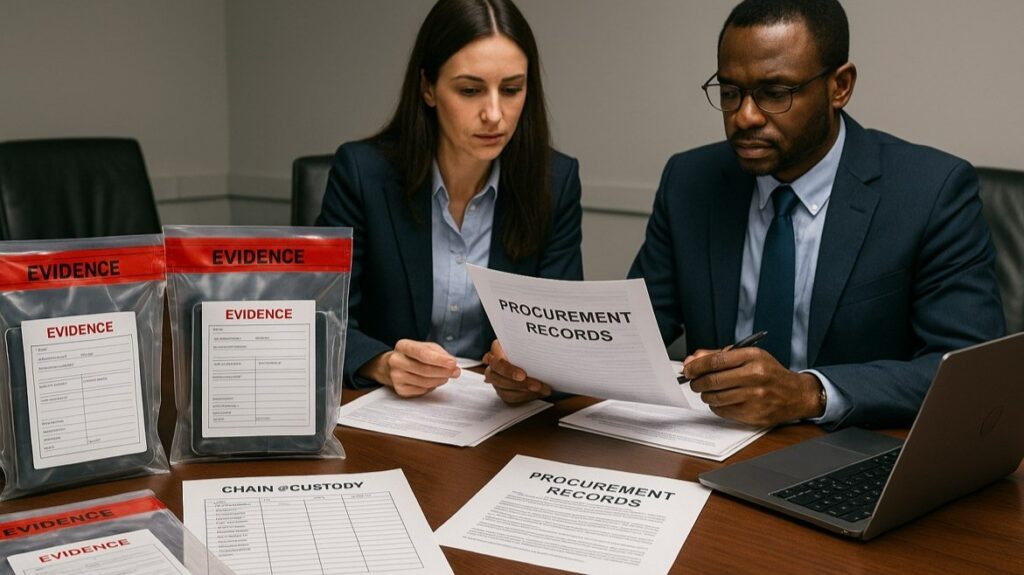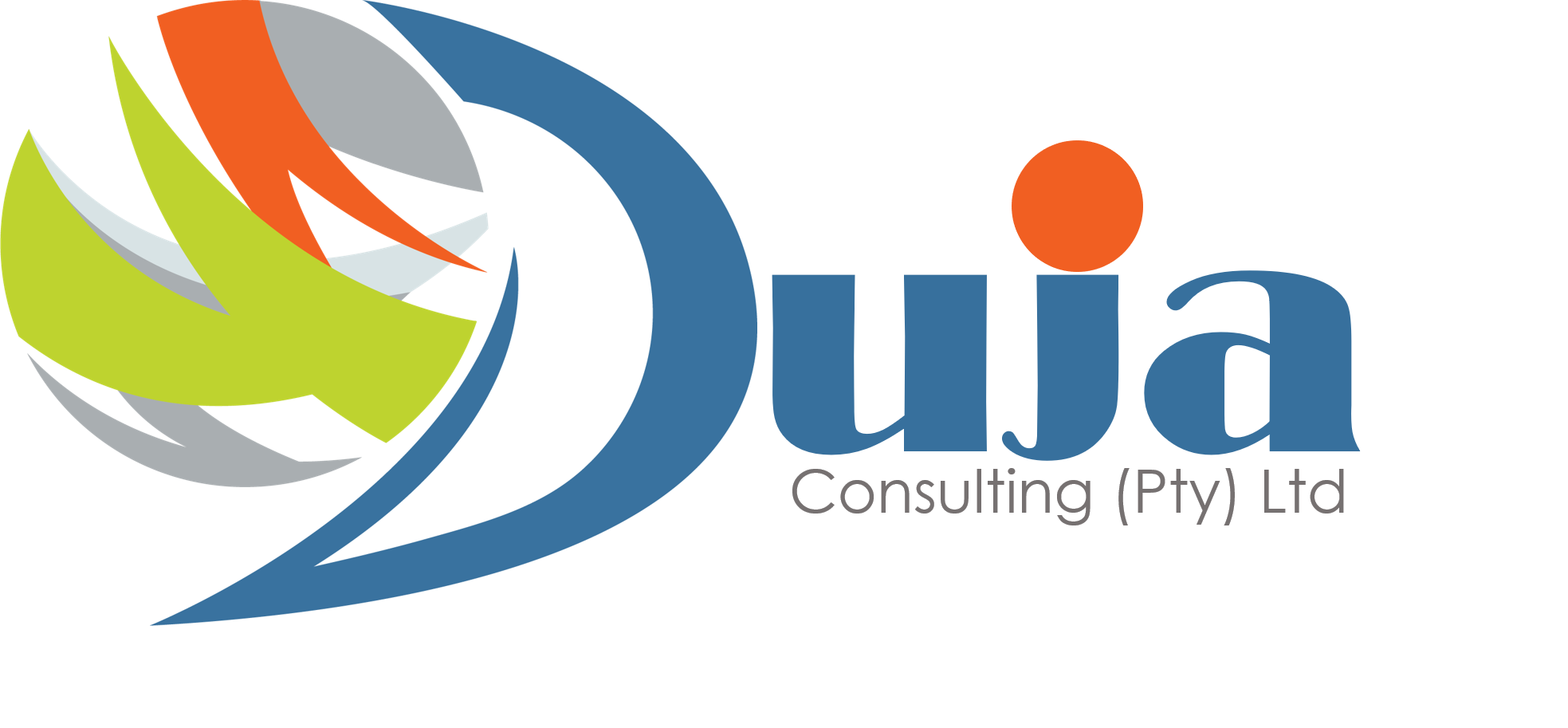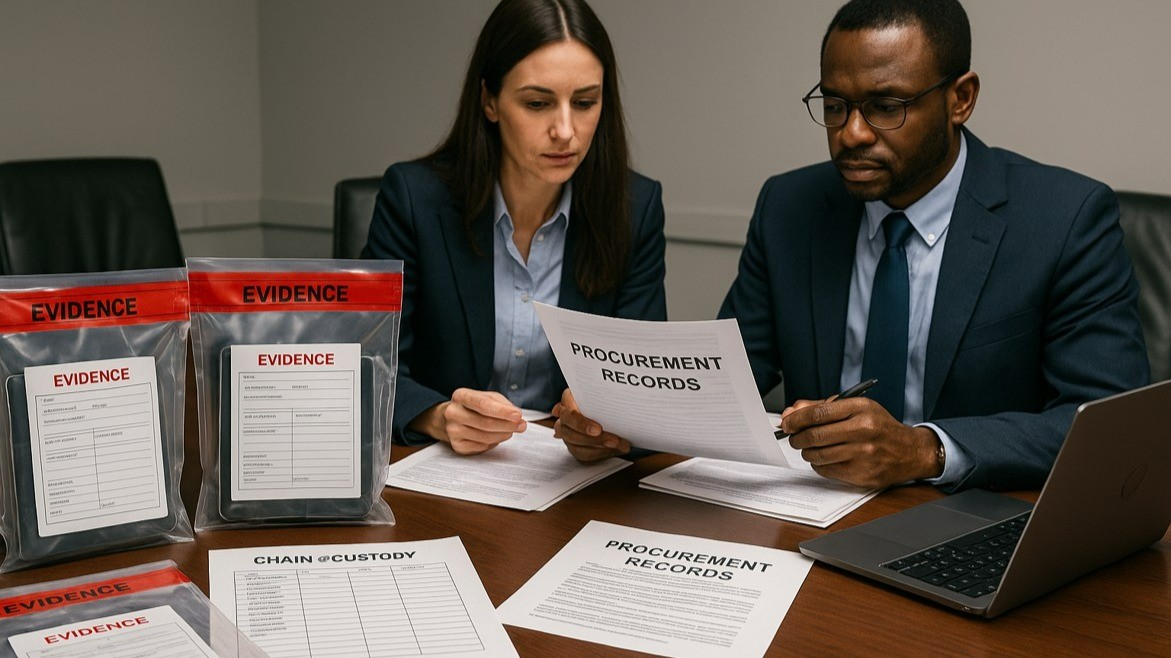Forensic Audit Readiness Plan: A Practical Guide
When a red flag appears, minutes matter. Most organisations lose them to confusion. We have published a practical guide to Creating a Forensic Audit Readiness Plan so your team can move from allegation to facts within hours, not weeks.
The article covers:
- Leadership, governance and lawful authority
- Evidence preservation and chain-of-custody you can defend
- Audit-ready systems and data
- Procurement and finance controls that pay for themselves
- Analytics to detect risk early
- Playbooks and training that stand up under pressure
Read the guide and download the readiness checklist. If you would like a quick assessment or help co-creating your playbooks, we would be glad to assist

Executive Overview
Forensic audit readiness is the organisational capability to respond quickly, lawfully and confidently when allegations, anomalies or suspicions arise. It is not only about catching wrongdoing; it is about preserving value. A well-built readiness plan shortens the time between a tip-off and the first reliable facts, protects the integrity of evidence, reduces legal and reputational exposure, and helps you recover losses faster. It also strengthens the control environment and discourages future misconduct.
This comprehensive guide sets out a practical, step-by-step approach that any organisation can follow—private or public, large or small. You will learn how to define your aims, establish governance, map legal obligations, prepare people and technology, engineer your data for auditability, design evidence-preservation procedures, and rehearse your response through realistic drills. You will also receive playbook templates, a ninety-day launch roadmap, a readiness checklist, and guidance on how a specialist partner such as Duja Consulting can accelerate each stage.
The goal is simple: when a forensic matter emerges, you should already have the policies, tools, roles, and muscle memory to act within hours—not weeks—while upholding fairness, dignity and due process. Readiness is a leadership choice. This article shows you how to make it a repeatable habit.
Introduction
Every organisation carries exposure to fraud, abuse, collusion, bribery, conflicts of interest, asset misappropriation and data-enabled schemes. Procurement and payments remain perennial hotspots; payroll, stock, travel and entertainment expenses, and third-party intermediaries also feature prominently. What distinguishes resilient organisations from brittle ones is not the absence of incidents but their ability to recognise weak signals, preserve artefacts, examine facts objectively, and communicate with care
A forensic audit readiness plan brings order to that moment. It clarifies authority, creates clean lines between decision-makers and investigators, prepares the evidence path, and ensures that technology and records are configured for auditability. It trains people on what to do—and what not to do—on the hardest day, when the instinct to “just check quickly” can compromise a matter.
Think of readiness as three interlocking capabilities:
- Prevention: robust controls, transparent procurement, and ethical culture.
- Detection: analytics, monitoring, and trusted speak-up channels.
- Response: legal and policy foundations, preservation procedures, skilled investigators, and disciplined communication.
What follows is a practical blueprint you can adopt and adapt.
The Forensic Audit Readiness Plan: Step-by-Step
1) Define the aim and what “ready” looks like
Decide your outcomes before you design the machinery.
Examples:
- Ability to preserve key digital and paper evidence within the first working day.
- Clear authority to initiate an internal investigation without delay.
- Standard playbooks for high-risk scenarios such as procurement collusion, payroll manipulation, stock shrinkage, bribery red flags, and cyber-enabled fraud.
- Measurable improvements such as reduced time to first facts, more recoveries, and fewer repeated control failures.
Document these aims in a short charter endorsed by the most senior leader.
2) Establish governance and leadership
Create a cross-functional steering group with a senior sponsor. Include finance, legal, internal audit, information technology, human resources, procurement, operations, security, and communications. Define decision rights: who authorises an investigation, who safeguards legal privilege, who speaks externally, who can suspend access, and who can engage external specialists.
3) Map your legal and policy foundations
Catalogue the laws, regulations, contracts, and policies that shape what you may collect, how you may process it, and how you must treat people. Cover data protection, labour rules, procurement rules, sector codes, and obligations to report certain offences. Align your disciplinary code, investigations policy, conflict-of-interest policy, supplier code, and records retention rules. Ensure you can lawfully issue document preservation instructions and legal hold notices.
4) Identify high-risk scenarios and evidence sources
Run risk workshops to identify credible scenarios and where the evidence would live.
For example:
- Procurement collusion: bid submissions, tender adjudication packs, supplier master data, bank confirmations, email and messaging, access logs, and meeting calendars.
- Payroll manipulation: payroll changes, bank account details, clock-in data, manager approvals, and device access around change events.
- Stock shrinkage: inventory movements, gate logs, CCTV, supplier delivery records, and variance approvals.
- Bribery and conflicts: gifts and hospitality registers, declarations of interest, vendor onboarding, due diligence files, travel and entertainment expenses, and communications.
5) Translate scenarios into investigation playbooks
For each scenario, write a ten-to-twelve step playbook that covers:
- Triggers and thresholds.
- Immediate preservation steps.
- Decision tree for escalation.
- Primary and secondary evidence sources.
- Roles and responsibilities.
- Timelines and documentation.
Keep these playbooks short, findable, and usable under pressure.
6) Build evidence preservation and chain-of-custody discipline
Evidence loses value when it cannot be trusted. Create:
- A standard preservation request template.
- A central log to record who collected what, when, where and how, with a clear, unbroken chain.
- Tamper-evident bags for devices and a controlled storage area.
- “Do not touch” guidance for well-meaning managers—no unsanctioned searches, screenshots or edits.
- A procedure for creating verifiable digital copies that act as the working set, keeping originals sealed.
7) Engineer lawful, ethical data access
Agree in advance the lawful basis for collecting, reviewing and transferring information. Define approval paths, proportionality tests, minimisation rules, and oversight. Address home-working realities, pooled devices, and personal messaging used for business. Carefully govern bring-your-own-device arrangements to avoid over-collection.
8) Configure systems for auditability
Readiness falters when systems are not configured to keep what matters.
Work with information technology to:
- Turn on and retain appropriate system logs.
- Maintain email journaling or equivalent archiving.
- Ensure enterprise resource planning systems keep user and time stamps on sensitive changes.
- Keep vendor and employee master data clean, with unique identifiers and documented approvals.
- Implement role-based access and segregation of duties across procurement, finance and payroll.
9) Create a records retention schedule that supports investigations
Define retention by record type. In highly contested areas—procurement, payroll, vendor changes, approval trails, and expense claims—retain long enough to investigate credibly while still complying with data protection law. Document the legal hold process, including who can issue a hold, how you notify custodians, and how you release a hold once the matter ends.
Define retention by record type. In highly contested areas—procurement, payroll, vendor changes, approval trails, and expense claims—retain long enough to investigate credibly while still complying with data protection law. Document the legal hold process, including who can issue a hold, how you notify custodians, and how you release a hold once the matter ends.
10) Strengthen speak-up channels
People report concerns when they trust the channel and the follow-through. Provide multiple reporting paths, including anonymous reporting, that are independent, accessible in multiple languages where needed, and free from retaliation. Publish timelines for acknowledgement and triage, and report back to the organisation on closed matters in a way that preserves dignity.
11) Tighten procurement and financial controls
Focus on controls that pay for themselves:
- Supplier due diligence and periodic refresh.
- Conflict-of-interest declarations and verification against corporate data sets.
- Bank account verification before first payment and on changes.
- Three-way matching for purchases, with exception reporting.
- Segregation of duties in requisitioning, approval and payment.
- Checks for duplicate invoices, round-number padding, split purchases to avoid thresholds, and repeated small credits.
12) Establish a forensic analytics programme
Analytics lets you hunt without waiting for tips
Start simple:
- Compare vendor, employee and director details for overlaps.
- Detect duplicate bank accounts or addresses across vendors and employees.
- Analyse unusual timing patterns such as approvals late at night or on rest days.
- Flag sequences that defy normal behaviour, such as repeated small claims just under approval limits.
- Use expected digit distribution tests to highlight fabricated amounts.
- Design analytics with care to avoid false positives and to protect privacy
13) Build capability: people, partners and tools
Define roles: investigations lead, case manager, digital evidence specialist, data analyst, legal counsel, human resources partner, and communications lead. Decide what you will build in-house and where an external partner adds speed, independence and depth. Maintain a small catalogue of approved specialist firms and agree rates in advance.
14) Train through realistic exercises
Run table-top exercises and live drills at least twice a year. Use real systems and genuine time pressure. Practise the awkward parts: pausing a supplier, seizing a device without drama, notifying a senior manager who is also a potential witness, and deciding whether to brief law enforcement. Record lessons and update playbooks.
15) Protect fairness, dignity and confidentiality
Forensic work touches people’s livelihoods and reputations.
Your readiness plan should enshrine:
- Presumption of innocence until facts are established.
- Respectful interviews with the right to respond.
- Confidential handling of identities.
- Clear separation between fact-finding and disciplinary decision-making.
- Consideration of wellbeing for teams exposed to distressing content.
16) Engage law enforcement and regulators with purpose
Know in advance when you are obliged to report and how you will do it. Maintain a short list of contacts. Recognise that early engagement may unlock investigative powers you do not have, but it also changes timelines and disclosure obligations. Decide formally on thresholds and make the record.
17) Prepare for third-party and supply-chain exposure
Many investigations hinge on access to supplier data. Bake audit rights into contracts, including access to sub-contractors where appropriate. Require prompt cooperation on preservation and interviews. Make sure you can step in to secure evidence when a supplier relationship ends.
18) Address cross-border complexity
Evidence often crosses borders even when people do not. Anticipate data transfer restrictions, conflicting local rules, and the need for local counsel. Plan device and data collection logistics across time zones, and decide where you will store master evidence sets
19) Clarify insurance and recovery paths
Review crime, fidelity, cyber and professional indemnity policies. Note notification windows, panel requirements and approved providers. Structure your documentation so that recoveries and claims are supported by a clean chain of facts.
20) Build the business case
Readiness is cost-effective. Add up the avoided waste from shorter investigations, fewer repeated incidents, reduced downtime in procurement and finance processes, improved supplier behaviour, and higher staff confidence. Include recoveries, dismissed false allegations resolved faster, and reputational protection. The cost categories—training, tools, external support and periodic assurance—are modest compared with one mishandled matter.
21) Use a maturity model and milestones
Describe what “basic”, “developing”, “established”, and “leading” look like across people, process, data, and technology. Set milestones each quarter. Typical measures include time to preserve, proportion of matters triaged within a set period, percentage of staff trained, number of analytics alerts that lead to improvements, and value of losses prevented or recovered.
22) A ninety-day launch plan
Weeks 1–2:
approve the charter; appoint the steering group; select priority scenarios.
Weeks 3–6:
draft investigations policy, legal hold process, and evidence procedures; configure core systems for auditability; design whistleblowing improvements.
Weeks 7–10:
write playbooks for priority scenarios; implement the first analytics tests; prepare device and data preservation kits; choose external partners.
Weeks 11–12:
run a full table-top exercise; fix gaps; publish guidance; plan the next quarter’s enhancement work.
23) What “good” looks like on the day
A buyer reports a suspicious vendor change.
Within hours you:
- Freeze further payments to the vendor, preserving business continuity elsewhere.
- Issue a legal hold and notify custodians.
- Preserve device images and collect relevant communications lawfully.
- Extract and review vendor and payment changes, with user and time stamps.
- Interview witnesses respectfully and record notes consistently.
- Decide rational next steps and, if needed, brief law enforcement with a clear narrative.
- That speed and order do not happen by chance; they come from readiness.
24) Common pitfalls and how to avoid them
- Late preservation: evidence vanishes; train managers to call before they click.
- Unclear authority: infighting delays action; document decision rights.
- Over-collection: privacy breaches and needless cost; collect only what you need.
- Unusable playbooks: long, vague or hidden; keep them short and visible.
- Technology without people: tools cannot replace judgement; invest in training.
- Failure to learn: incidents repeat; run after-action reviews and fix root causes.
25) Measures and reporting that matter
Report to the board and audit committee on:
- Speed: median time from trigger to preservation.
- Coverage: percentage of high-risk processes with working playbooks.
- Capability: number of trained managers and investigators.
- Outcomes: recoveries, disciplinary outcomes, control improvements, and supplier changes.
- Culture: usage of speak-up channels and staff confidence from pulse surveys.
26) Governance and continual improvement
Treat readiness as a living system. Schedule quarterly updates to playbooks, retrain after staff turnover, and include a readiness theme in internal audit plans. Every investigation should produce lessons for prevention, detection and response.
27) Ethics, culture and trust
The most forensic-ready organisations do not act like secret police. They are fair, transparent about standards, and serious about retaliation-free reporting. They hold leaders and favourites to the same standard as everyone else. That fairness is your strongest long-term control.
28) When to call a specialist partner
Lorem ipsum dolor sit amet, consectetur adipiscing elit. Ut elit tellus, luctus nec ullamcorper mattis, pulvinar dapibus leo.
29) How Duja Consulting can help
Duja Consulting supports clients across the full readiness journey: policy and playbook design; procurement and finance control reviews; data mapping and auditability configuration; evidence preservation procedures; analytics design and testing; training and exercises; and independent investigation support. We tailor the approach to your context—private sector, regulated industries, and public entities—so you can move quickly and lawfully when it matters most.
30) Conclusion
Forensic audit readiness is a strategic capability that protects value, strengthens culture, and accelerates the truth. Build it before you need it. Start with leadership intent, design simple playbooks for your highest-risk scenarios, engineer your data for auditability, and train people to act with fairness and discipline. The returns show up in speed, confidence and credibility.
If you would like a readiness assessment or help to co-create your playbooks, connect with Duja Consulting.
Quick-Start Forensic Readiness Checklist
- Charter approved and leadership sponsor named
- Legal and policy map completed
- Investigations policy and legal hold process in place
- Evidence preservation kits and chain-of-custody log ready
- Systems configured for auditability and retention
- High-risk scenarios identified with usable playbooks
- Whistleblowing channels trusted and monitored
- Procurement and finance controls strengthened
- First set of analytics live with review cadence
- Trained team and external partners on standby
- Table-top exercise completed and lessons captured


